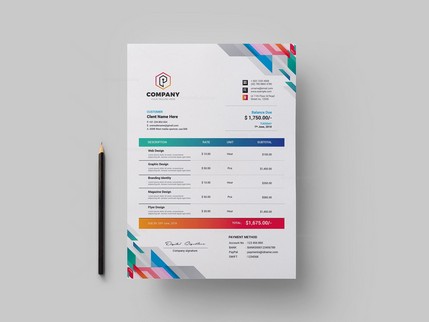How to write an invoice email
Once you’ve provided a product or service to a client, it’s time to get paid. But before you do that, you’ll need to produce an invoice and email it across.
Many small businesses and freelancers have trouble with late payments, and while it isn’t effective in every case, a clear and easy to understand invoice email could help you get paid more quickly. Want to know how to write an email with an invoice attached? Read on for our top tips, as well as a sample invoice email you can use for your customers.
Tips for how to write an invoice via email
Learning how to write an email with an invoice attached is a straightforward process. We’ve put together a couple of key tips to ensure you make it as easy as possible for your clients to process your invoice:
Include the invoice as an attachment
Don’t paste your invoice into the body of the email. Instead, attach it as a downloadable PDF file. This enables your clients to save, print, or upload your invoice to their accounting software.
Include all the important information in the subject line
Many businesses are inundated with emails, so the easier you can make it to help them find your invoice, the faster you’ll get paid. By putting all the important information in the subject line, including the invoice number and the due date, your clients will find it much easier to identify your invoice.
Consider using an invoice template
If you need to invoice a lot, using invoice email templates can save you a significant amount of time. All you need to do is change the key information, which shouldn’t take more than a few minutes, and you can send off your invoice quickly and easily.
Make sure your invoice includes everything the client needs to know
If you don’t include all the necessary information, your client may need to request a second invoice, or they might just neglect to pay at all. Check out our guide to how to write an invoice for a comprehensive list of everything you need to include on the invoice itself.
Invoice Email Template
Writing emails from scratch can be time-consuming, particularly if you need to invoice large numbers of clients. After you’ve learnt how to write an invoice email, using templates can be a great way to cut down on the amount of admin you need to deal with. Here’s a simple and effective sample you can use to send a friendly reminder about an invoice that’s due to be paid soon:
Subject line: Invoice [X] for [Service/Product] due [Date]
Hi [Recipient’s Name],
I hope you’re well! Please see attached invoice number [X] for [Product/Service], due on [Date]. Don’t hesitate to reach out if you have any questions.
Kind regards,
[Sender’s Name]
If you’ve already sent an invoice, but it’s overdue, you may need to chase late payment. Here’s a sample invoice collection email you can use to do just that:
Subject line: Overdue invoice [X] for [Service/Product] due [Date]
Hi [Recipient’s Name],
I hope you’re well! We’re yet to receive payment for invoice number [X] for [Product/Service], which was due on [Date]. Please let us know when we can expect to receive payment, and don’t hesitate to reach out if you have any questions or concerns.
Kind regards,
[Sender’s Name]
As you can see, the best invoice emails are simple, friendly, and provide all the information the client needs to process your invoice.
Following up on your invoice email
Of course, sending an invoice email isn’t always the end of the story. Sometimes, your clients may delay payment. In these cases, it’s always a good idea to get in touch with your contact by phone, as it’s possible that your emails are simply going to the wrong person. If this doesn’t work, you may need to escalate the process by sending a formal letter. Subsequent steps, such as sending debt collectors, charging late payment interest, or starting legal proceedings should only be considered as a last resort.
